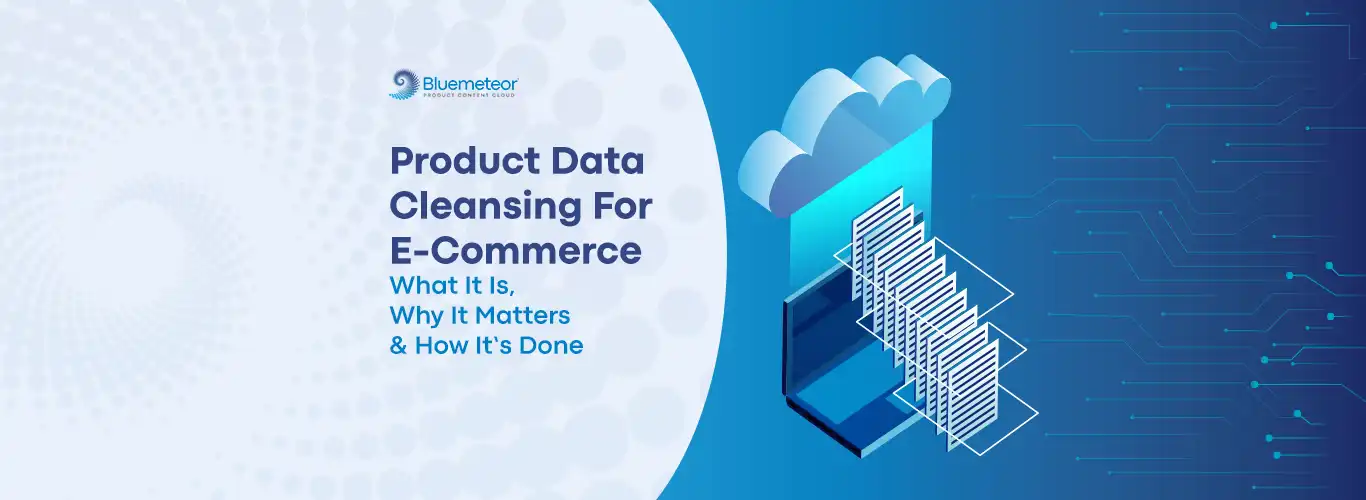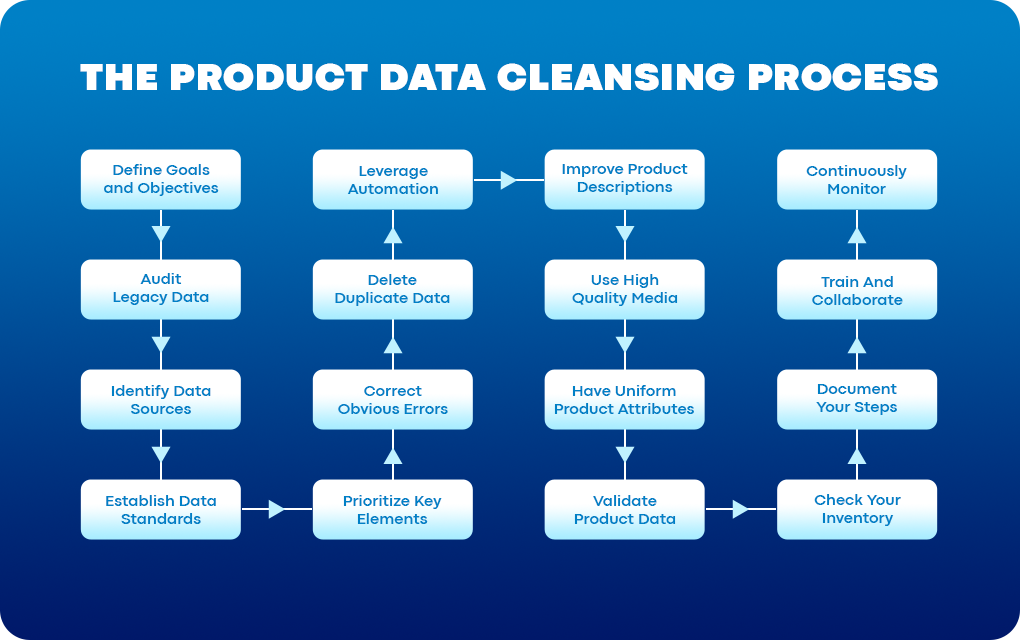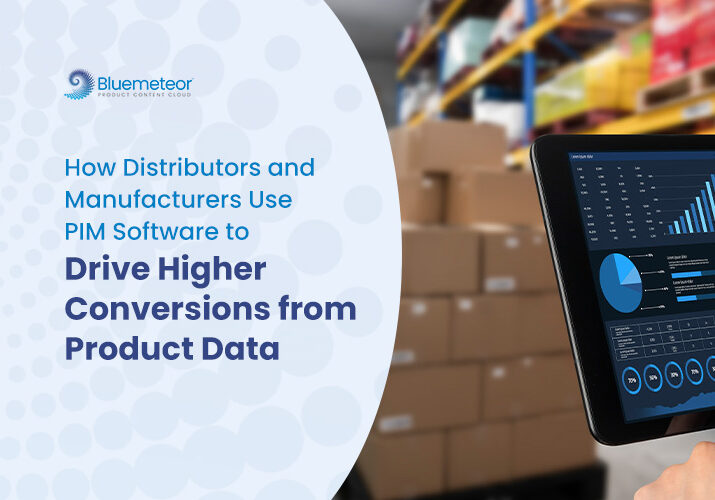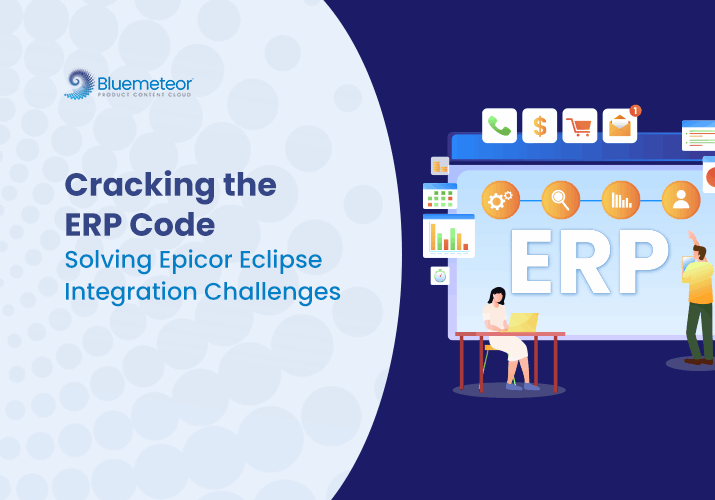Product Data Cleansing for E-Commerce – What It Is, Why It Matters & How It’s Done

Setting The Stage
Product data cleansing sways buying decisions. It attracts new customers, enhances customer experiences, and builds customer loyalty. It’s essential for e-commerce sales and marketing, so businesses go to great lengths to maintain the quality of their product data, information, and digital assets. This is where product data cleansing comes into play.
A recent Google / Ipsos Consumer Insights survey showed that 85% of consumers said accurate product data – descriptions, specifications, pictures, videos, and reviews – is important when deciding which brand or retailer they buy from. What’s more, 64.2% of customers return their e-commerce purchases because a product did not match the information displayed on the website, highlighting the critical role of accurate product data in ensuring customer satisfaction.
A Simple Introduction to Product Data Cleansing for E-Commerce
Product data cleansing for e-commerce refers to the complex process of identifying, rectifying, and eliminating errors, inconsistencies, inaccuracies, and redundancies in the product information and data displayed on online retail platforms.
In the context of e-commerce, product data cleansing is necessary for providing positive customer experiences, improving search rankings (SEO), complying with regulations, and ultimately driving greater online sales.
How Does Product Data Cleansing Boost E-Commerce Success?
To understand this, consider the following:
65% of online shoppers only buy items that have a gallery of product images. 75% click ‘Buy’ only after reading detailed and accurate product descriptions, while 80% refine their online search for products using product specifications and attributes. Such figures sum up a key consumer sentiment – unorganized, misleading, or incomplete product feeds on e-commerce channels are detrimental to their shopping experience, and they won’t reward any of it.
Most major e-commerce platforms and retail channels operate under strict rules of product data governance, so sub-par product data usually gets rejected before it can be displayed to online customers. On the odd occasion, or on lesser-known e-commerce platforms, when unclean product data is associated with a product online, that product and brand lose ground on competitors.

4 Key Benefits
Accuracy:
Product data cleansing makes sure that product information and data, such as titles, descriptions, specifications, and prices, are correctly displayed on e-commerce websites. It assigns products to appropriate categories and subcategories, helping customers navigate websites more easily and find products in the right sections.
Consistency:
Product data cleansing maintains uniformity in how product data is presented online. This involves standardization of formats, units of measurement, and terminology across all products, making it convenient for buyers to compare products and find exactly what they’re looking for. It also eliminates product listing duplications that confuse customers.
Totality:
The process of product data cleansing results in all relevant information for a product is always available and displayed on e-commerce websites. Product specifications like dimensions, materials, care instructions, and all other associated attributes will be visible to online customers, giving them all the details needed to make informed buying decisions.
Media Quality:
Product images and videos must be of a high quality, and accurately depict a product and its capabilities. Product data cleansing prevents low-quality or misleading media from being displayed online, which helps avoid customer dissatisfaction and negative reviews.
Examples Of Unclean Product Data Vs Clean Product Data
Product pricing:
| Unclean Product Data | Clean Product Data |
| $99.99 | $99.99 |
| $ 99.99 | $99.99 |
| USD 99.99 | $99.99 |
| 99.99 USD | $99.99 |
Brand name:
| Unclean Product Data | Clean Product Data |
| Samson Industrial Chemicals Inc. | Samson Industrial Chemicals |
| Samson Industrial Chemicals | Samson Industrial Chemicals |
| samson industrial chemicals | Samson Industrial Chemicals |
| Samson Industrial Chemicals Incorporated | Samson Industrial Chemicals |
Product attribute (color):
| Unclean Product Data | Clean Product Data |
| Red | Dark Red |
| Dark Red | Dark Red |
| Deep Red | Dark Red |
What Does Product Data Cleansing Entail?
Product data cleansing is a continuous, traditionally tedious, process that brands should audit regularly. Thankfully, these days there’s robust enterprise software that leverages AI and data science to alleviate the manual burden plaguing the data cleansing process, helping identify and correct data errors at scale. The technology has advanced so far that it can even automatically correct spelling and grammatical errors, and plug gaps in product data, without human intervention.
With a capable system in place, a thorough and well-executed product data cleansing process should include these steps:
Define Goals and Objectives
Set clear goals that you aim to achieve by cleansing your product data. This may include improving customer experience, boosting online search results, increasing sales revenue, etc.
Audit Legacy Data
Conduct a forensic audit of your existing product data to locate errors, inconsistencies, inaccuracies, and missing information. Start by reviewing product titles, descriptions, images, pricing, and attributes.
Identify Data Sources
Know where your product data is, where it comes from, and where it goes. It might be stored in databases, spreadsheets, ERP systems, or obtained from external sources.
Establish Data Standards
Create standardized formats, naming conventions, and attributes for your product data to make it easier to manage and maintain accurate information.
Prioritize Key Elements
Focus on important product data elements that need immediate or routine upkeep, preferably the ones that impact customer experience and e-commerce sales the most.
Correct Obvious Errors
Fix basic product data errors, such as spelling mistakes, outdated prices, and inaccurate attributes.
Delete Duplicate Data
Identify and remove duplicate product listings on e-commerce channels.
Leverage Automation
Use AI to automate monotonous and time-consuming tasks like keeping track of duplicate data, validate data against predefined rules and brand guidelines, and streamline the overall product data cleaning process.
Improve Product Descriptions
Compelling product descriptions can convince buyers to choose a certain product over others. Optimize your product descriptions for SEO to drive more online traffic to your product feeds.
Use High-Quality Media
Product images and videos are proven to be a decisive factor in online buying behavior. The higher the quality of media, the more sales revenue a product generates.
Have Uniform Product Attributes
Try to maintain consistency in product attributes like sizes, colors, and other distinguishing specifications.
Validate Product Data
Implement data validation practices so that any new data coming into the system will adhere to your brand’s established standards.
Document Your Steps
Create documentation outlining the product data cleansing process, stakeholders, standards, tools required, and timeline.
Train And Collaborate
Adequately train all stakeholders of the product data cleansing process and equip them with the right tools, so that everyone involved is on the same page and follows defined processes.
Continuously Monitor
Don’t forget to constantly monitor the impact of the product data cleansing process. Compare it against data metrics like customer reviews, sales numbers, click-through rates, and adapt the process accordingly.

Need Help?
Blue Meteor Product Content Cloud is a class-leading enterprise software suite that can solve product data cleansing challenges at scale. Give your brand’s e-commerce performance a significant lift with our cloud-native platform.
Schedule a personalized demo with one of our data cleansing experts to discover more about our solution.
Related Articles
Recent Post
Categories




